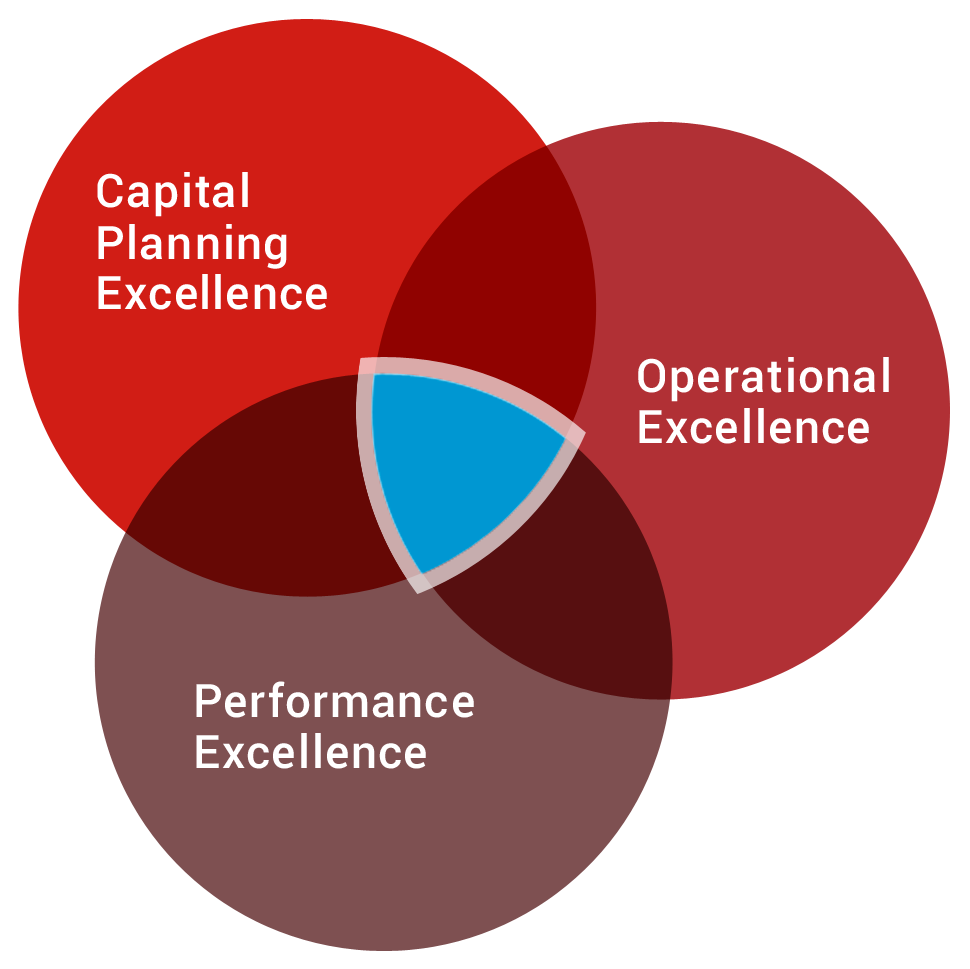After wrapping up another two-month blog series, I am excited to add a new category to our Blog this week, Operations & Maintenance (O&M). I am going to get this category going with stand-alone posts over the next couple of weeks so that we can bolster the O&M content, and expand upon the second aspect of Integrated Asset Management which is Operational Excellence. At Roth IAMS, we want to help facility and infrastructure asset managers to hit the sweet spot where Capital Planning Excellence, Operational Excellence and Performance Excellence meet.
It has been great to see so many of the facility and asset management professionals increasing their focus on Preventative Maintenance (PM) Planning. We have had more requests to start discussions and share ideas on Equipment Inventory & Tagging, which forms the basis of any PM Program, in conjunction with a robust Computerized Maintenance Management System (CMMS).
It’s not like PM is a new thing. Everyone knows that PM is hugely beneficial in extending the life of major equipment within their facilities. However, there are still lots of organizations that self-report 80% to 90% of reactive maintenance to 10% to 20% PM.
So why are so many organizations so far behind where they would like to be when it comes to PM? To me, there are two main reasons and they are in fact linked to each other.
The first and most important reason, is a decades long reduction in staffing and budgets supplied to organizations for O&M activities overall. When I talk to experienced Facility Management (FM) professionals, they speak of teams that were two or three times larger than their current headcount, and in most cases the portfolios have grown in terms of square footage and/or number of assets. Facility Managers are being asked to do more with less as much as any other profession today.
The triple whammy of fewer resources (people and money), aging facilities and infrastructure with increasing occupant expectations, there often just aren’t enough hours in the day to get through the reactive maintenance, let alone focus on PM. Unfortunately, this is a systemic issue that won’t be solved overnight and is beyond the ability of most Facility Managers to impact or change.
The second issue is the result of the “delayed gratification” that comes with starting a PM program. Just like going to the gym, when you first start a PM program, it hurts in the early days if you do it right and you don’t see the results right away. You have to wait before the compound benefits of repeated action over time results in a reduction in reactive maintenance. This means that in the early days of any PM program, you have to do “even more” with less. When you are barely keeping your head above water with reactive needs, having the discipline to “pay now” to benefit later can be overwhelming.
The key is to take baby steps within the context of the resources you have available. This means that it is critical to prioritize what PM tasks will have the best return for your portfolio, and then make sure that you and your stakeholders understand that patience will be required until the investment starts to pay off.
If you approach it like compound interest on your investments, you will be much more likely to succeed. In the early stages of the program, the results will be small and incremental. However, as you start to “earn interest” on the interest you already earned, the benefits will really start to pay off.
The old prophecy about the best time of plant a tree really holds true for starting a PM program. The best time to start is 20 years ago, the second best time is today. So, when are you going to plant your PM “tree”?




